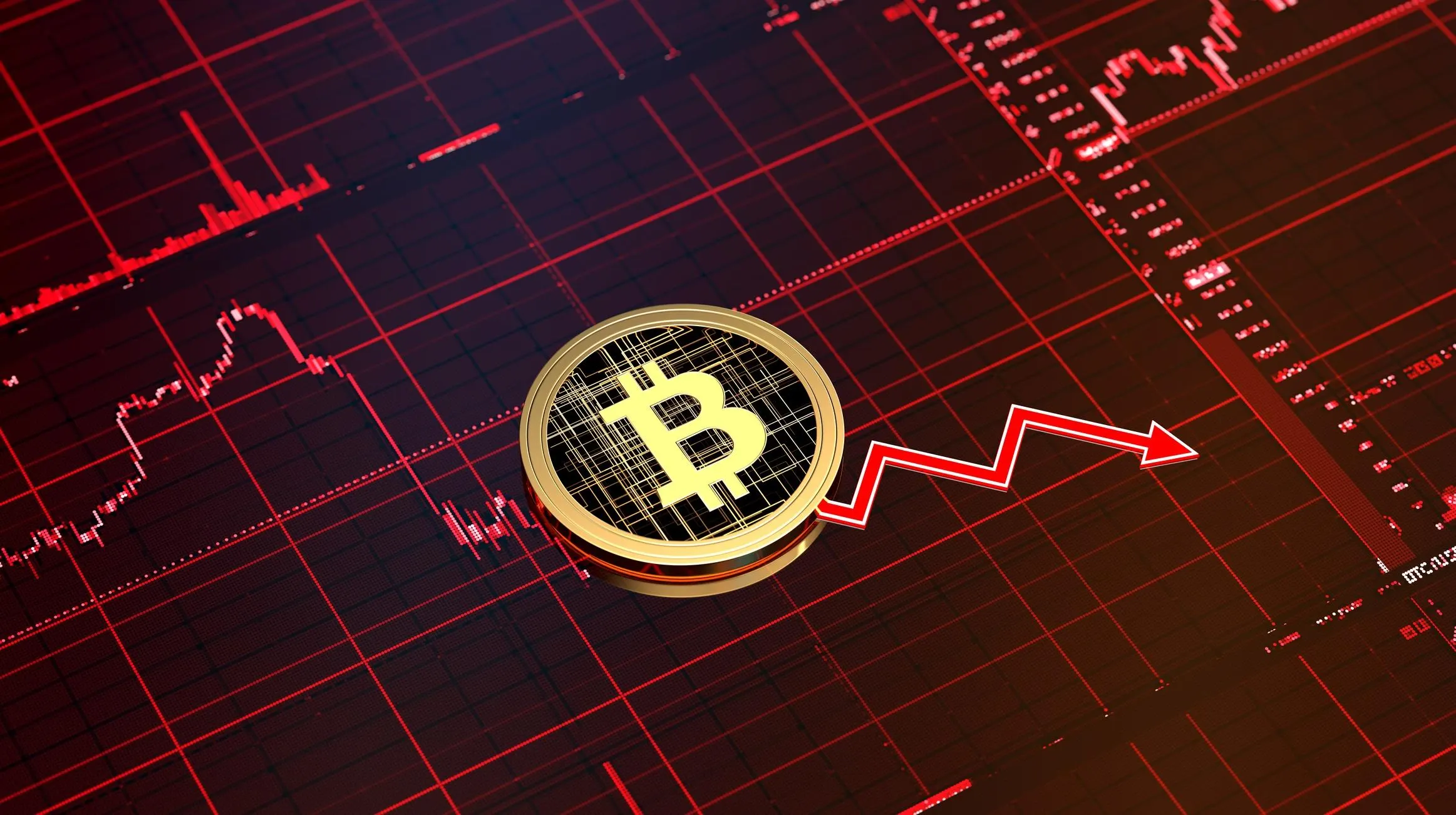Market stress has a way of revealing where capital truly feels safest. Over the last several periods of volatility, one pattern has stood out: Ethereum is attracting a wave of stablecoin inflows, even as risk assets whipsaw and sentiment turns cautious. This migration of liquidity isn’t a random quirk of the cycle; it’s a structural story about where crypto’s “cash” goes to wait out storms—and how those reserves later power fresh rallies.
In simple terms, when traders and institutions de-risk, they often seek instruments that preserve nominal value while keeping them inside the crypto rails. That means USDT, USDC, and DAI are flowing toward ecosystems with the deepest markets, best tooling, and broadest opportunity set. Increasingly, that destination is Ethereum and its Layer-2 network of rollups. The result is a feedback loop: more stablecoins migrating to Ethereum beget deeper on-chain liquidity, which attracts more market participants, which in turn strengthens Ethereum’s role as crypto’s settlement engine. These massive stablecoin inflows matter not only for short-term price dynamics but also for the long-arc evolution of decentralized finance.
In this comprehensive guide, we’ll unpack what’s driving the surge in Ethereum stablecoin inflows, why such inflows tend to cluster during drawdowns, what they may signal for ETH price and DeFi risk appetite, and how investors can position for the next phase. We’ll also examine structural catalysts like EIP-4844, the rise of L2 rollups, and the maturing MEV and staking landscapes that together make Ethereum the most compelling venue for capital rotation when markets turn rough.
Understanding Stablecoin Inflows: A Primer
What Are Stablecoin Inflows and Why Do They Matter?
“Stablecoin inflows” refer to net positive movements of dollar-pegged tokens into a specific chain or platform over a period. When inflows rise on Ethereum, it often means that traders are transferring USDT, USDC, DAI, and other dollar-referenced tokens into Ethereum addresses or Layer-2 accounts. This typically happens through bridges, exchange withdrawals to on-chain wallets, or direct minting.
Why does it matter? Stablecoins are the closest proxy to “dry powder” in crypto. They’re the funds investors hold when they’re sidestepping volatility but staying ready to deploy. A growing pool of stablecoins on Ethereum can increase DEX depth, tighten spreads, and improve execution quality. Over time, those dollars often rotate from the sidelines into liquidity pools, perpetuals margin, NFT bids, or collateral for lending markets—building a base for the next expansion in Total Value Locked (TVL).
The Flight-to-Safety Dynamic in Crypto
During macro or crypto-native crises, investors often reduce leverage and unwind risk. But unlike traditional finance, where cash retreats to bank accounts or money funds, crypto’s risk-off posture frequently parks inside stablecoins. Why? Because remaining on-chain preserves speed, composability, and access. Traders can hedge with perpetual futures, harvest yields, and move capital globally 24/7 without re-entering the fiat system.
Ethereum benefits from this dynamic because it offers the richest menu of DeFi protocols, the deepest DEX liquidity, and the broadest staking and L2 ecosystems. When fear spikes, on-chain participants prioritize venues with robust infrastructure and mature risk controls. That’s why, in bouts of turbulence, stablecoins tend to gravitate toward Ethereum.
Why Ethereum Attracts Massive Stablecoin Inflows

Network Effects: Liquidity Begets Liquidity
Ethereum’s network effects are a flying wheel. The more capital that sits on Ethereum, the better the liquidity depth on decentralized exchanges, the tighter the slippage, and the more reliable price discovery becomes. This depth encourages professional market makers and whales to concentrate activity where counterparties are most abundant. In turn, that deepens liquidity further, reinforcing Ethereum as the “venue of venues.”
Stablecoin inflows accelerate this process. With more USDT, USDC, and DAI available, market makers can inventory more quotes, ordinary users can swap at tighter spreads, and lending markets can support larger borrow sizes at lower utilization. The result is a platform that remains functional—even attractive—during volatility, precisely when others may struggle.
Infrastructure and Tooling: A Professional-Grade Stack
Another reason capital concentrates on Ethereum during turmoil is the quality of its tooling. From on-chain analytics dashboards to sophisticated risk engines, the Ethereum stack provides the telemetry and controls that institutions expect. Portfolio managers can track exchange netflows, gas usage, open interest, and funding rates with precision, while risk desks automate circuit breakers and hedges. This professional-grade visibility reduces uncertainty and encourages money to stay on-chain rather than fleeing back to fiat.
The Role of Layer-2 Rollups in Absorbing Flows
Layer-2 rollups—from optimistic to zero-knowledge designs—have slashed transaction costs and increased throughput. When markets are hectic, L2s keep the rails moving for retail and pro users alike, allowing investors to reposition without paying punitive fees. The combination of settlement finality on Ethereum and execution efficiency on L2s lets stablecoins “live” where they can be deployed fastest.
As EIP-4844 (proto-danksharding) and subsequent upgrades cut data availability costs, L2s become even more appealing. Lower costs translate into more DeFi experimentation, more perps venues, and more structured yield products—each one another reason for stablecoin capital to flow in and stay.
Composability and Yield: Staying Productive in Cash
Parking dollars on Ethereum doesn’t mean sitting idle. Stablecoin holders can lend to blue-chip money markets, provide liquidity to AMMs, or stake in low-volatility vaults. They can ladder short-dated strategies, or keep funds in instantly redeemable tokens while earning a modest yield. This ability to remain productive—yet defensive—during risk-off periods is unique to Ethereum’s composable design. It’s a crucial reason inflows spike when the market gets choppy.
Market Turmoil as a Catalyst: Reading the Signal
De-Risking Without Leaving the Arena
In traditional bear phases, outflows from exchanges to banks can signal a wholesale exit from the asset class. In crypto, significant portions of capital often just rotate format: from volatile tokens into stablecoins. When the destination of those stablecoins is Ethereum, the message is subtle but powerful: investors want to stay in the arena, keep optionality, and be close to the best liquidity when the tide turns.
Monitoring Exchange and On-Chain Behavior
Large exchange withdrawals of stablecoins to Ethereum, rising lending collateralization in USDC/DAI, and swelling TVL across money markets are all footprints of incoming capital. While spikes can be short-lived, sustained inflows typically precede a rebuilding of risk appetite. In prior cycles, persistent stablecoin accumulation on Ethereum has set the stage for renewed ETH bid support, healthier DEX volumes, and a pickup in perpetuals basis.
The “Dry Powder” Thesis and ETH’s Reflexivity
When more “cash” accumulates on Ethereum, it becomes easier for ETH and other ERC-20 assets to catch bids. Order books thicken, liquidity provision grows more competitive, and market makers are willing to warehouse more inventory. This reflexive loop often shows up first in microstructure data—tighter spreads, higher depth within 1% of mid, and rising funding rates neutrality—before it spills into headline price action.
Structural Tailwinds: Why the Inflows Could Persist

Protocol Upgrades and Lower Frictions
With EIP-4844 already reshaping L2 economics and future data sharding on the roadmap, Ethereum’s cost curve is bending down. Lower fees mean more transaction headroom for retail, more strategy refreshes for quants, and more opportunity for aggregators to rebalance users cheaply. Each basis point shaved from gas fees makes Ethereum a more compelling home for stablecoins.
The Maturity of Staking and Security Economics
Post-merge, staking has turned ETH into a yield-bearing asset secured by a professional validator set. A credible monetary premium and predictable issuance schedule further reinforce Ethereum’s role as settlement money for the crypto economy. In times of stress, participants prefer settling where finality is well understood and slashing risks are managed. That confidence encourages stablecoin capital to cluster where settlement risk feels lowest.
Risk Management and MEV Transparency
The Ethereum community’s ongoing work to measure, route, and mitigate MEV has improved execution quality across the stack. While MEV cannot be eliminated, better transparency and tooling help sophisticated players quantify costs and hedge flow. Combined with OFAs and smart order routing across DEXs and CEXs, this makes Ethereum a fairer venue for large stablecoin holders who need to reposition during volatility.
Implications for Traders and Investors
For Short-Term Traders: Liquidity Is an Edge
For active traders, the surge in Ethereum stablecoin inflows is a liquidity signal. More stablecoins on Ethereum often mean better fill quality, tighter spreads, and more dependable funding. Strategies that rely on quick rehedges or basis trading benefit from the deeper pools that inflows create. Watch open interest, funding, and perp basis on major L2s; improving microstructure can be a leading indicator of risk turning back on.
For Long-Term Investors: A Healthier Base
For allocators with longer horizons, persistent stablecoin accumulation on Ethereum suggests the ecosystem is building a larger cash buffer. That buffer cushions drawdowns and provides fuel for future advances. It also hints at a maturing market structure where DeFi rails serve as the default cash management layer for crypto. Over time, this can support a stronger ETH narrative as the settlement asset for crypto’s dollar economy.
For Builders: Design for the Next Inflow
If you’re shipping protocols or apps, design with inflow cycles in mind. Ensure integrations with major stablecoins (USDT, USDC, DAI) are seamless. Make onboarding via bridges and CEX withdrawals frictionless. Optimize for L2 costs and create low-volatility vaults or markets where newcomers can put stablecoins to work safely. When the next wave of inflows hits, users will gravitate toward venues that feel familiar, fast, and transparent.
Risks and Counterpoints
Over-Reliance on Stablecoin Custodians
Many stablecoins depend on off-chain reserves and traditional custodians. Concentration risk, regulatory action, or de-pegging events can impair what users assume is “cash.” Ethereum’s advantage here is diversity: multiple issuers, mechanisms (fiat-backed, crypto-collateralized), and growing on-chain attestations reduce single-point failures. Still, prudent users should diversify stablecoin exposure and monitor peg stability metrics.
Bridge and Smart Contract Risks
Inflows often traverse bridges and settle into smart contracts. While audits and battle-testing reduce risk, nothing is perfectly safe. Capital flowing into new venues should be mindful of contract age, bug bounties, and transparent governance. “Blue-chip” money markets and AMMs with conservative parameters tend to be more resilient during stress.
Cyclical Nature of Flows
Not all inflows are sticky. Some are tactical, linked to arbitrage or hedging. Distinguishing between transient spikes and structural build-ups requires monitoring not just raw inflow totals but how those dollars are employed over time—collateralization rates, TVL persistence, and the breadth of protocols seeing deposits.
See More: Ethereum Price Test Whales Stir Market Sentiment
How to Interpret Today’s Inflows for Tomorrow’s Decisions
A Framework for Reading the Tape
-
Track the mix of stablecoins on Ethereum: a greater share in USDC/DAI often points to DeFi collateral demand, while USDT surges can reflect exchange-driven activity.
-
Observe where inflows settle: money markets, AMMs, and perps venues tell different stories about risk appetite.
-
Watch L2 utilization: when inflows jump but gas fees remain tame, it’s a sign that rollups are absorbing demand effectively.
-
Overlay funding and basis: sustained neutral-to-positive funding with rising stablecoin balances can precede trend resumption.
Positioning Across Phases
During peak fear, prioritizing stable venues, short-dated strategies, and conservative collateralization can preserve flexibility. As funding normalizes and spreads tighten, incremental risk—market-neutral or low-beta—can lead. When TVL expands across sectors and DEX volumes trend higher, rotation into growth assets and structured exposure may be warranted. Throughout, Ethereum’s depth and composability let investors move along this spectrum without leaving the chain.
The Bigger Picture: Ethereum as Crypto’s Cash and Collateral Layer
If Bitcoin is crypto’s macro asset, Ethereum is increasingly its cash, collateral, and credit layer. Massive stablecoin inflows during turmoil are not a coincidence; they are a vote of confidence in Ethereum’s rails. They confirm that, when it matters, market participants want to be close to the best liquidity, the broadest protocol toolkit, and the most predictable settlement environment.
As L2 adoption accelerates, gas falls, and composable finance keeps maturing, the gravitational pull of Ethereum for dollar liquidity will likely strengthen. That doesn’t mean flows won’t cycle through other ecosystems—competition is healthy—but it does suggest that, in the heat of the moment, Ethereum remains the place where crypto’s dollars choose to wait, work, and, eventually, re-deploy.
Conclusion
Ethereum sees massive stablecoin inflows amidst market turmoil because it offers what stressed markets demand most: deep liquidity, robust infrastructure, low-friction expressivity through DeFi, and a credible long-term roadmap. These inflows represent more than defensive positioning; they’re the scaffolding for the next advance. When capital decides it’s time to re-risk, having those dollars already on Ethereum’s rails shortens the fuse from caution to conviction.
For traders, the message is to watch microstructure and flow composition. For investors, it’s to appreciate how a growing stablecoin base can underpin healthier cycles. And for builders, it’s to design products that meet inflow cohorts where they are—on Layer-2, in stablecoins, demanding safety first but hungry for optionality tomorrow. If history is a guide, the same inflows that cushion drawdowns today will power experimentation, liquidity, and price discovery in the expansions to come.
FAQs
Q: Do stablecoin inflows to Ethereum always lead to a higher ETH price?
Not instantly. Inflows indicate growing “dry powder” and better market plumbing. Price usually responds after liquidity improves, spreads tighten, and risk appetite returns. Sustained inflows coupled with rising DEX volumes and neutral-to-positive funding rates often precede stronger ETH performance, but they are one input among many.
Q: Which stablecoins dominate inflows to Ethereum during volatility?
Historically, USDT, USDC, and DAI dominate. Their relative shares vary: USDC/DAI often anchor DeFi collateral, while USDT may reflect CEX-to-on-chain rotations. Monitoring the mix helps infer whether flows are defensive, arbitrage-driven, or preparing for deployment in lending and AMMs.
Q: How do Layer-2 rollups change the inflow dynamic?
Layer-2 rollups reduce costs and increase throughput, making it cheaper to bridge, rebalance, and deploy stablecoins. With EIP-4844 lowering data costs, L2s can absorb spikes in activity without congesting mainnet. That means inflows can translate into real on-chain action rather than sitting idle due to high gas fees.
Q: Are there risks to relying on stablecoins during market stress?
Yes. Stablecoins carry issuer, reserve, and peg stability risks. There are also bridge and smart contract risks when moving funds. Diversification across issuers, sticking with blue-chip protocols, and monitoring on-chain health metrics can mitigate—but not eliminate—these risks.
Q: What on-chain metrics best track Ethereum stablecoin inflows?
Useful signals include net exchange withdrawals of stablecoins to Ethereum, changes in TVL for money markets and AMMs, perpetuals open interest and funding trends, and L2 daily active addresses. Watching how stablecoins are utilized—collateral, LP positions, or idle balances—helps distinguish tactical spikes from structural growth.





















